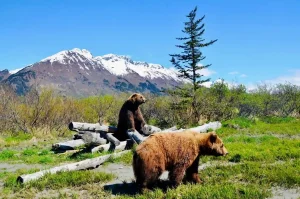As urbanization reshapes our living environments, wildlife conservation becomes crucial in urban planning. Preserving natural habitats in cities fosters a deeper connection with nature, improving mental health outcomes. By providing access to green spaces, cities can promote wellness and community connections. However, balancing human and wildlife needs in urban areas is complex, requiring innovative strategies for harmonious coexistence.
Key Takeaways
- Urban wildlife conservation promotes mental well-being by providing opportunities for nature-based interventions and reducing symptoms of anxiety and depression.
- Habitat restoration and conservation efforts can improve mood and cognitive function by increasing access to green spaces and wildlife viewing areas.
- Collaborative approaches to urban planning and conservation can enhance human well-being and environmental sustainability by prioritizing biodiversity and ecological connectivity.
- Community-led conservation initiatives and educational workshops can foster a sense of community and connection to the environment, promoting coexistence with urban wildlife.
- Incorporating wildlife-friendly architecture and green infrastructure into urban design can support local species and promote ecological corridors and biodiversity hotspots.
Urban Wildlife Conservation Challenges
Characterized by habitat fragmentation, urban sprawl, and human-wildlife conflict, urban wildlife conservation faces a multitude of challenges that underscore the need for effective wildlife conservation strategies. These challenges demand collaborative approaches, integrating scientific research, community engagement, and policy reforms to mitigate the impacts of urbanization on wildlife populations and their habitats.
Mental Health Benefits of Nature
Through exposure to natural environments, individuals can experience reduced symptoms of anxiety and depression, highlighting the critical role that urban wildlife conservation plays in promoting mental well-being. Nature-based interventions, such as green spaces and wildlife viewing, have been shown to improve mood and cognitive function, fostering a sense of community and connection to the environment.
Implementing Wildlife Conservation Strategies
Urban planners and conservationists must work in tandem to develop and implement effective wildlife conservation strategies that prioritize biodiversity, ecological connectivity, and community engagement in urban areas. These wildlife conservation systems should incorporate citizen science initiatives, habitat restoration, and species-specific conservation plans to promote coexistence with urban wildlife, ultimately enhancing human well-being and environmental sustainability.
Urban Planning for Wildlife Habitats
Effective wildlife conservation strategies in urban areas necessitate a paradigm shift in urban planning, wherein wildlife habitats are intentionally integrated into city landscapes to facilitate ecological corridors and biodiversity hotspots. This can be achieved through:
- Green infrastructure: incorporating parks, gardens, and green roofs into urban design.
- Wildlife-friendly architecture: designing buildings with features that support local species.
- Ecological connectivity: creating corridors to link fragmented habitats and promote species movement.
Community Engagement in Conservation
Community-led conservation initiatives fostered through participatory governance and inclusive decision-making processes are essential for garnering widespread support and promoting a sense of shared responsibility for urban wildlife conservation. Effective community engagement strategies, such as volunteer programs and educational workshops, can increase civic ownership and foster a culture of coexistence, ultimately enhancing the success of wildlife conservation strategies in urban areas.

Frequently Asked Questions
How Does Wildlife Conservation Impact Local Economic Development in Urban Areas?
Wildlife conservation efforts in urban areas can stimulate local economic growth by generating ecotourism revenue, creating jobs, and enhancing property values, ultimately contributing to a thriving and sustainable local economy.
Can Wildlife Conservation Strategies Be Adapted for Different Urban Climates?
Yes, wildlife conservation strategies can be adapted for different urban climates by considering factors such as temperature, precipitation, and vegetation, allowing for tailored approaches to mitigate climate-specific challenges and maximize conservation efficacy.
What Role Do Schools Play in Promoting Urban Wildlife Conservation Awareness?
Schools play an essential role in fostering urban wildlife conservation awareness by integrating environmental education, outdoor activities, and community engagement, empowering the next generation to become stewards of local ecosystems and promoting a sense of belonging to the natural world.
How Can Urban Residents Balance Wildlife Conservation With Pest Control Needs?
Urban residents can strike a balance between wildlife conservation and pest control needs by adopting integrated pest management strategies, utilizing non-lethal deterrents, and implementing humane wildlife removal practices that prioritize coexistence with urban wildlife populations.
Are There Any International Collaborations for Urban Wildlife Conservation Strategies?
Yes, international collaborations exist to advance urban wildlife conservation strategies, such as the International Union for Conservation of Nature (IUCN) and the United Nations Environment Programme (UNEP), fostering global cooperation and knowledge sharing.
Conclusion
Urban ecosystems can be optimized to support both human well-being and biodiversity conservation. By integrating wildlife conservation into urban planning, cities can mitigate the negative impacts of urbanization on mental health and foster community connections. Effective conservation strategies, such as habitat preservation and citizen science initiatives, can promote a sense of environmental stewardship and social cohesion. Ultimately, prioritizing urban wildlife conservation is essential for creating sustainable, resilient, and healthy cities that benefit both humans and wildlife.
You May Also Like To Read:









